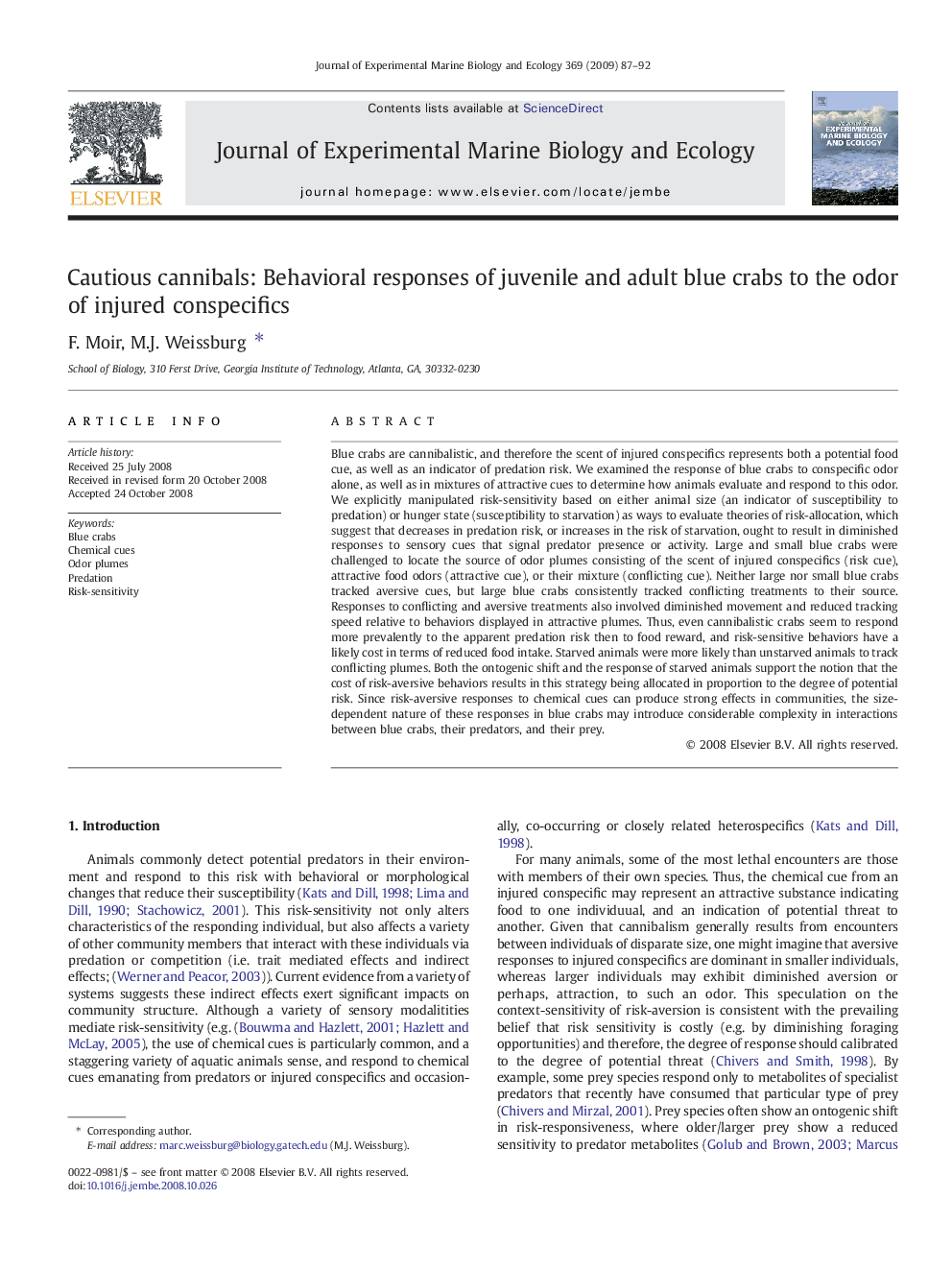| کد مقاله | کد نشریه | سال انتشار | مقاله انگلیسی | نسخه تمام متن |
|---|---|---|---|---|
| 4397060 | 1305862 | 2009 | 6 صفحه PDF | دانلود رایگان |

Blue crabs are cannibalistic, and therefore the scent of injured conspecifics represents both a potential food cue, as well as an indicator of predation risk. We examined the response of blue crabs to conspecific odor alone, as well as in mixtures of attractive cues to determine how animals evaluate and respond to this odor. We explicitly manipulated risk-sensitivity based on either animal size (an indicator of susceptibility to predation) or hunger state (susceptibility to starvation) as ways to evaluate theories of risk-allocation, which suggest that decreases in predation risk, or increases in the risk of starvation, ought to result in diminished responses to sensory cues that signal predator presence or activity. Large and small blue crabs were challenged to locate the source of odor plumes consisting of the scent of injured conspecifics (risk cue), attractive food odors (attractive cue), or their mixture (conflicting cue). Neither large nor small blue crabs tracked aversive cues, but large blue crabs consistently tracked conflicting treatments to their source. Responses to conflicting and aversive treatments also involved diminished movement and reduced tracking speed relative to behaviors displayed in attractive plumes. Thus, even cannibalistic crabs seem to respond more prevalently to the apparent predation risk then to food reward, and risk-sensitive behaviors have a likely cost in terms of reduced food intake. Starved animals were more likely than unstarved animals to track conflicting plumes. Both the ontogenic shift and the response of starved animals support the notion that the cost of risk-aversive behaviors results in this strategy being allocated in proportion to the degree of potential risk. Since risk-aversive responses to chemical cues can produce strong effects in communities, the size-dependent nature of these responses in blue crabs may introduce considerable complexity in interactions between blue crabs, their predators, and their prey.
Journal: Journal of Experimental Marine Biology and Ecology - Volume 369, Issue 2, 28 February 2009, Pages 87–92